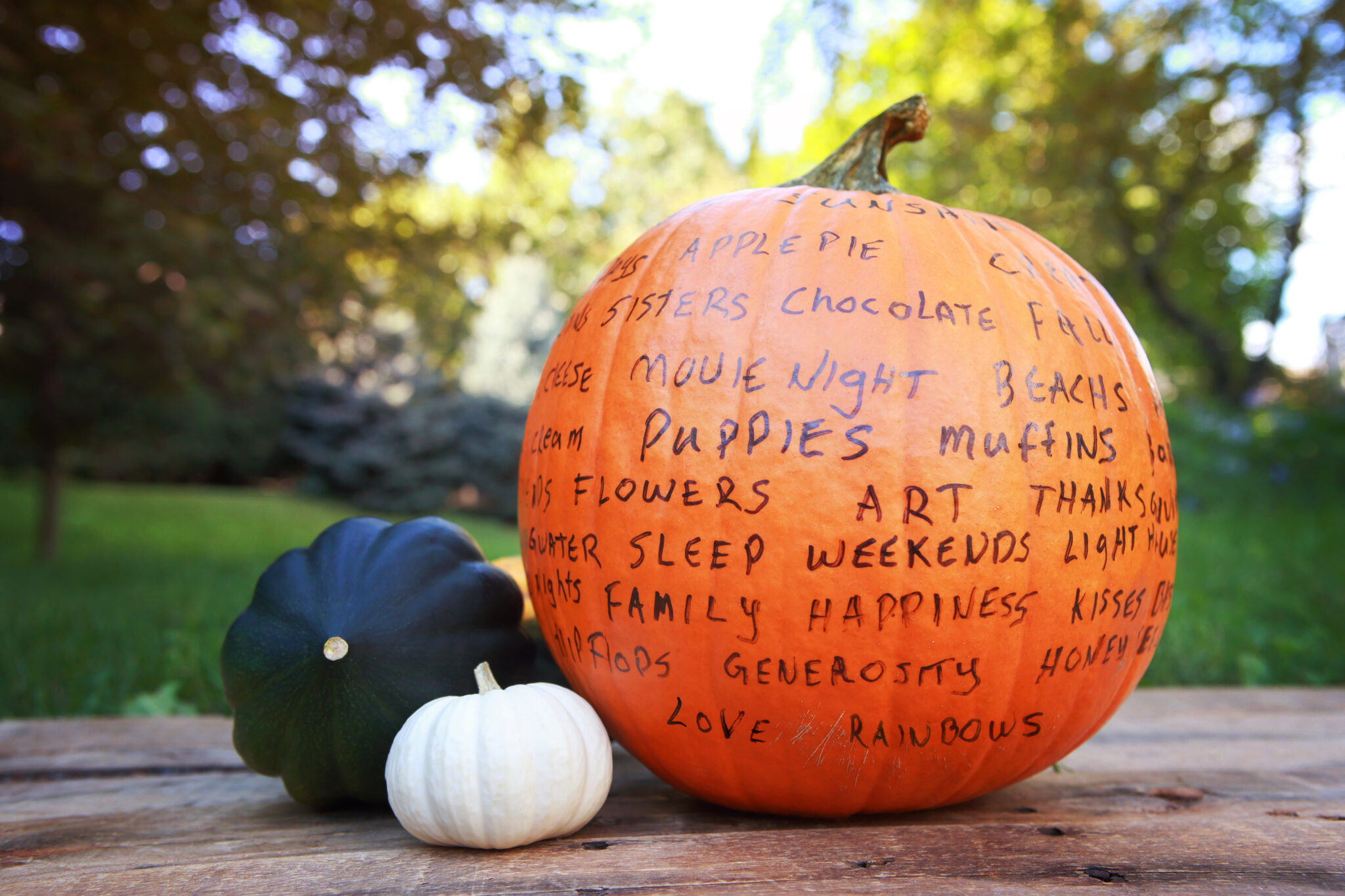Discovery Point Blog

November: A Month of Thankful Thoughts
By the time November rolls around, thankfulness isn’t always at the top of any one’s mind. With the Thanksgiving holiday just around the corner, now is a great time to help your child focus on all the things we still have to be thankful for, even during this challenging year.
Talking to kids about being grateful and encouraging them to practice gratitude and appreciation isn’t always easy, but it is important. Practicing gratitude as a part of our everyday routine is crucial to being happy and present in the moment. The earlier children learn this, the better.
Making November a month of thankful thoughts is a wonderful tradition you can enjoy with your children year after year. Read on for some tools and activities you can use to get your children involved in this character-building practice.
Start a Gratitude Journal
Maintaining a daily gratitude journal throughout the month of November only takes a handful of minutes each day, but the effects are incredible. Taking a moment out of your day to focus on what you’re grateful for can have a huge impact on your mood and perspective that lasts well beyond the time you spend writing.
Help your children experience this transformation in themselves by having them start a gratitude journal with you. You can approach it as a 30-day challenge if your children are competitive, or as a craft activity with drawings, cut-outs, and memorabilia if they enjoy getting creative.
It’s helpful to have a thought starter available to encourage your child to get specific as they journal. This poster from Mom Can Do This includes daily prompts like “What lessons are you grateful for?” and “What part of the day are you grateful for?” to help your child probe different areas of their life and find the blessings in each and every one.
Play the Gratitude Game
The Gratitude Game is an update on Pick-Up Sticks that brings children together to think about all they have to be thankful for. It’s also loads of fun!
You’ll need a set of multi-colored pick-up sticks (you can also paint chopsticks with watercolors or use colored straws) and the Gratitude Game category page. You can print out the original version from Teach Beside Me or write up your own based on your preferred category types and stick colors.
Each stick color represents a different category of things to be grateful for. To begin the game, hold all the sticks in one hand and drop them so they fall randomly. Players then take turns picking up a stick from the pile. The goal is to avoid making any other sticks move while doing so. If a player causes a stick to move that isn’t the one they’re picking up, they must return the stick to the pile and their turn is over.
When a player picks up a stick without moving any of the others, they then check the category list based on the color of that stick and name something they’re grateful for in that category. The player who has collected the most sticks by the end of the game is the winner.
Make a Gratitude Pumpkin
Do you purchase a pumpkin each year to decorate your patio or home’s interior? Then you’re already halfway to a Gratitude Pumpkin tradition!
This year, give your pumpkin meaning by having your children write things they’re grateful for on it. They can use a simple permanent marker or colored or metallic paint markers to suit your decorative scheme. Just make sure the pumpkin has been thoroughly cleaned beforehand. Otherwise, any dirt or dust on the exterior could prevent the ink from sticking.
Each time a visitor comes into your home, whether a friend, neighbor, or family member, have them add their own message to the gratitude pumpkin. Getting more people involved in the project will expose your children to different perspectives and help them understand just how much there is to be grateful for. Plus, the pumpkin acts as a daily visual reminder of the importance of gratitude.
This year has been a roller coaster of emotions for adults and children alike. By showing your children how happiness and gratitude are intertwined, you can help them learn to be resilient and remain positive when things aren’t going their way.
These activities are an excellent way to start that conversation. However, the most important thing is to make gratitude a regular practice even after the month of November comes to an end.


